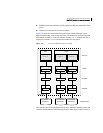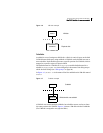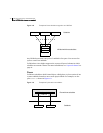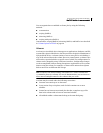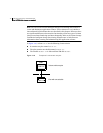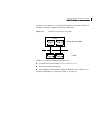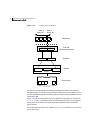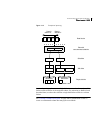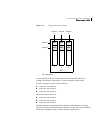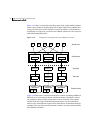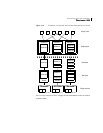
34 Understanding Veritas Volume Manager
Volume layouts in VxVM
Volume layouts in VxVM
A VxVM virtual device is defined by a volume. A volume has a layout defined by
the association of a volume to one or more plexes, each of which map to
subdisks. The volume presents a virtual device interface that is exposed to other
applications for data access. These logical building blocks re-map the volume
address space through which I/O is re-directed at run-time.
Different volume layouts each provide different levels of storage service. A
volume layout can be configured and reconfigured to match particular levels of
desired storage service.
Implementation of non-layered volumes
In a non-layered volume, a subdisk is restricted to mapping directly to a VM disk.
This allows the subdisk to define a contiguous extent of storage space backed by
the public region of a VM disk. When active, the VM disk is directly associated
with an underlying physical disk. The combination of a volume layout and the
physical disks therefore determines the storage service available from a given
virtual device.
Implementation of layered volumes
A layered volume is constructed by mapping its subdisks to underlying volumes.
The subdisks in the underlying volumes must map to VM disks, and hence to
attached physical storage.
Layered volumes allow for more combinations of logical compositions, some of
which may be desirable for configuring a virtual device. Because permitting free
use of layered volumes throughout the command level would have resulted in
unwieldy administration, some ready-made layered volume configurations are
designed into VxVM.
See “Layered volumes” on page 51.
These ready-made configurations operate with built-in rules to automatically
match desired levels of service within specified constraints. The automatic
configuration is done on a “best-effort” basis for the current command
invocation working against the current configuration.
To achieve the desired storage service from a set of virtual devices, it may be
necessary to include an appropriate set of VM disks into a disk group, and to
execute multiple configuration commands.
To the extent that it can, VxVM handles initial configuration and on-line re-
configuration with its set of layouts and administration interface to make this
job easier and more deterministic.




